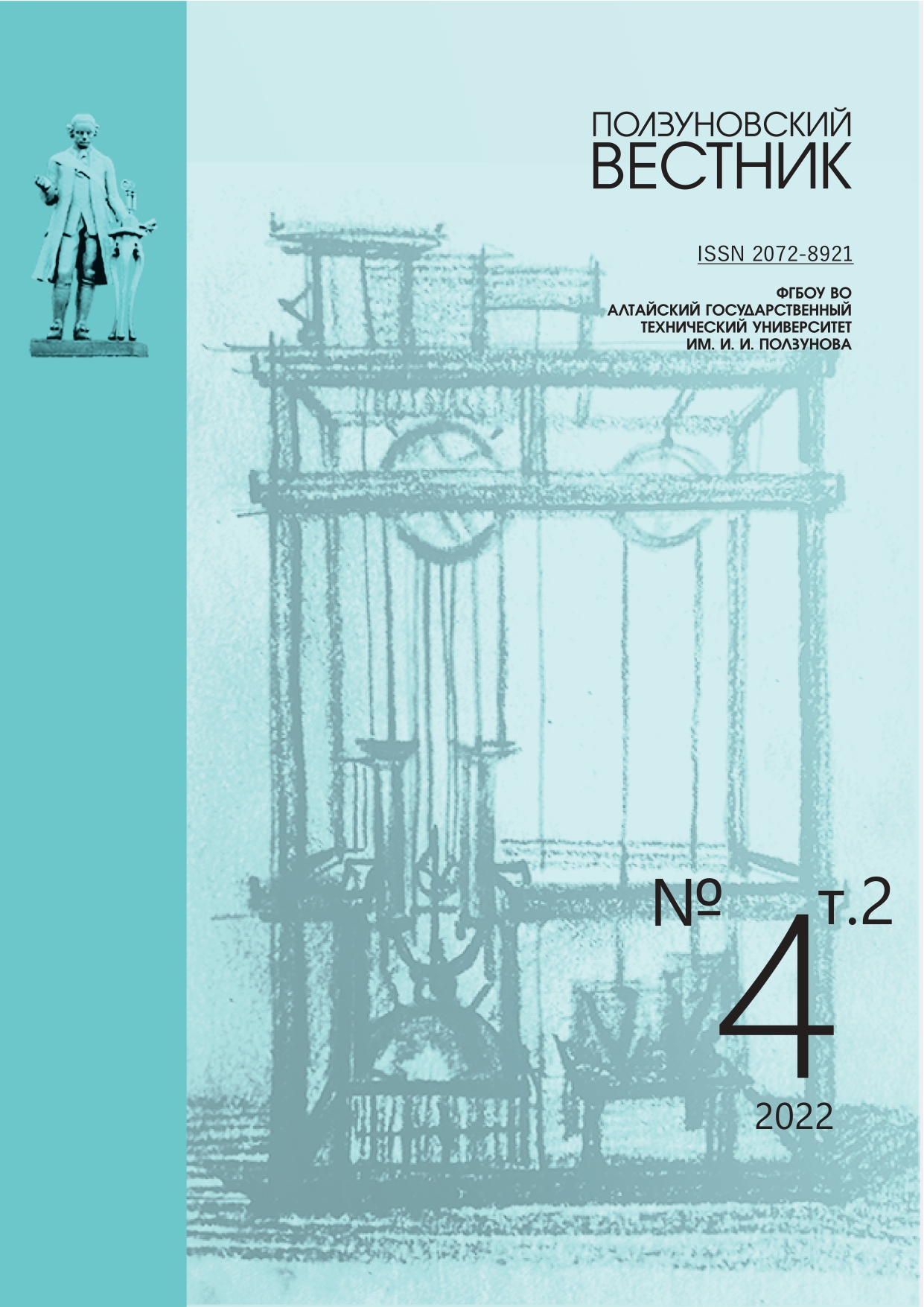COMPARISON OF METHODS TO INCREASE ADHESION BETWEEN BUTADIENE ELASTOMER AND BASALT FABRIC
EDN: HEHCAI
DOI:
https://doi.org/10.25712/ASTU.2072-8921.2022.4.2.014Keywords:
composite elastomer, adhesion, strength, surface treatment, high-modulus material, reinforced rubber, basalt fabricAbstract
An actual issue of materials science in the creation of elastomeric high-modulus composites based on materials of different chemical nature is the reliability of their connection to each other. With the introduction of reinforcing fillers into the elastomeric matrix, the question arises of the adhesion between the adhesive and the substrate, which is responsible for the reliability of the products during operation. The article proposes two methods for treating the surface of basalt fabric to increase contact with the rubber matrix: applying a dissolved rubber mixture in phenylmethane (toluene) and treating with layers of Chemosil 211/411. The obtained samples of reinforced elastomers with processing showed an increase in high-modulus properties - the tensile strength values were 38.1±2.3 MPa in the first method and 36.4±2.2 MPa in the second, while for the original reinforced elastomer this value was 29.0±1.5 MPa. The application of a layer of dissolved rubber compound increased the adhesion index by ~16% compared to the original reinforced sample.Treatment with Chemosil 211/411 layers improved the adhesion of the reinforcing fabric with the rubber matrix by 10 times. The test for delamination between materials showed that the destruction occurred along the rubber and was of a cohesive nature. This indicates a strong interaction of the substrate with the adhesive, which exceeds the strength of the elastomer.
References
Использование неодимовых каучуков в рези-нах протекторов и боковин шин / А.Е. Корнев [и др.] // Каучук и резина. – 2004. – №6. – С. 7–10.
Большой справочник резинщика. Ч. 1. Резины и резинотехнические изделия / под общ. ред. С.В. Резниченко и Ю.Л. Морозова. – М.: ООО «Издательский центр «Техинформ» МАИ», 2012. – 735 с.
Conway, K.M. & Pataky, G.J. (2022). Aramid Fiber Surface Area Impact on Elastomer Crack Growth. Exp Mech. (In Eng). DOI:10.1007/s11340-022-00901-2.
Müller, K., Reußmann, T., Lützkendorf, R. & Schmitt, M. (2011). Aramid pulp for the reinforcement of thermoplastic elastomers. Int Polym Sci Technol, 38, 1-4. (In Eng). DOI:10.1177/0307174X110380050.
Andreopoulos, A.G., Konstantinidou, A.V. & Petsalas, H.J. (1989). Elastomeric polyurethanes reinforced with aramid fibers. J. Appl. Polym. Sci, 38, P. 2073-2078. (In Eng). DOI:10.1002/app.1989.070381109.
Тростянская, Е.Б. Армированные пластики: справ. пособие / под ред. Г.С. Головкина, В.И. Семенова. – М.: МАИ, 1997. – 268 с.
Newcomb, B.A. (2016). Processing, structure, and properties of carbon fibers. Composites Part A: Applied Science and Manufacturing, 91, 262-282. (In Eng). DOI: 10.1016/j.compositesa.2016.10.018.
Huang, X. (2009). Fabrication and Properties of Carbon Fibers. Materials, Vol. 2(4), 2369-2403. (In Eng). DOI:10.3390/ma2042369.
Ибатуллина, А.Р. Обзор производителей и сравнение свойств сверхпрочных высокомодульных волокон // Вестник Казанского технологического университета. – 2014. – Т. 17. – № 19. – С. 136–139.
Dalinkevich, A.A., Gumargalieva, K.Z., Marak-hovsky, S.S. & Soukhanov, A.V. (2009). Modern basalt fib¬rous materials and basalt fiber-based polymeric composites. Journal of Natural Fibers, 6(3), 248-271. (In Eng). DOI: 10.1080/15440470903123173.
Bai, S., Jones, M.P., Pech de Laclause, T., Jiang, Q., Mautner, A., Swolfs, Y. & Bismarck, A. (2022). Towards robust synchronous belts: influence of surface characteristics on interfacial adhesion. Composite Interfaces, 1-15. (In Eng). DOI: 10.1080/09276440.2022.2029311.
Ismail, H., Muniandy, K. & Othman, N. (2012). Fatigue life, morphological studies, and thermal aging of rattan powder-filled natural rubber composites as a function of filler loading and a silane coupling agent. BioResources, 7(1), 0841-0858. DOI:10.15376/biores.7.1.0841-0858.
Etcheverry, M. & Barbosa, S.E. (2012). Glass fiber reinforced polypropylene mechanical properties enhancement by adhesion improvement. Materials, 5(6), 1084-1113. (In Eng). DOI:10.3390/ma5061084.
Cech, V., Knob, A., Hosein, H.A., Babik, A., Lepcio, P., Ondreas, F. & Drzal, L.T. (2014). Enhanced interfacial adhesion of glass fibers by tetravinylsilane plasma modification. Composites Part A: Applied Science and Manufacturing, 58, 84-89. (In Eng). DOI:10.1016/j.compositesa.2013.12.003.
Способ повышения адгезии стекловолокна к резинам: пат. 326775 СССР № 1345942/23-5 : заявл. 07.07.1969 : опубл. 19.01.1972, Бюл. №4.
Разработка стойких к авиационным синтетическим маслам резин на основе смесей нитрильных и диеновых каучуков / В.В. Мухин [и др.]. // Вестник СВФУ. 2016. – №6 (56). – С. 41–50.
Crowther, B.G. (ed) Handbook of rubber bonding. UK: iSmithers Rapra Publishing, 2001. – 400 p. (in Eng
Downloads
Published
How to Cite
Issue
Section
License
Copyright (c) 2022 Mikhail M. Kopyrin, Aital E. Markov, Afanasii A. Dyakonov, Sakhayana N. Danilova, Mikhail P. Lebedev, Aleksei G. Tuisov, Aitalina A. Okhlopkova, Nadezhda N. Lazareva, Anatoly K. Kychkin

This work is licensed under a Creative Commons Attribution 4.0 International License.















 .
. This work is licensed under a
This work is licensed under a 
